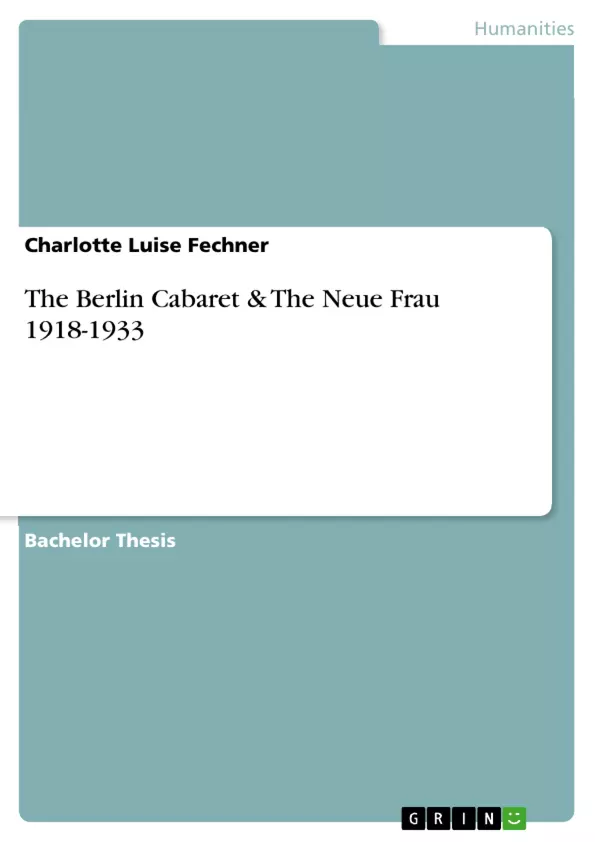The 'Golden Twenties': it was a time of great diversity and confusions, changes and excitements, fears and joys, both in public life and in private. And eventually, a time when womankind redefined herself. The Neue Frau was born.
This work examines the Myth of the Neue Frau in relationship with the metropolis Berlin and its Cabaret scene during the time of the Weimar Republic.
"Berlin is a girl in a pullover, not much powder on her face, Hölderlin in her pocket, thighs like those of Atlanta, an undigested education, a heart which is almost too ready to sympathise, and a breadth of view which charmes one’s repressions . One walks with her among the lights and the shadows. And after an hour or so one is hand in hand...Berlin stimulates like arsenic, and then when one’s nerves are all ajingle she comes with her hot milk of human kindness; and in the end, for an hour and a half, one is able, gratefully to go to sleep." Harold Nicolson, journalist, about Berlin during the 1920s
Inhaltsverzeichnis
- Introductory Note
- Berlin & The Weimar Woman
- The Berlin Cabaret & The Woman
- Rosa Valetti & The Cabaret Größenwahn
- Trude Hesterberg & Die Wilde Bühne
- Dinah Nelken & Die Unmöglichen
- Valeska Gert & Der Kohlkopp
- The Cabaret Song & The Woman
- Dance In The Cabaret & The Woman
- Anita Berber
- Epilogue: 2001
Zielsetzung und Themenschwerpunkte
The essay explores the relationship between the Neue Frau (New Woman) and the Berlin Cabaret of the Weimar Republic. It examines the myth of the Neue Frau and the actual new woman of the time, as well as the role of women in the Berlin cabaret scene.
- The myth of the Neue Frau and its portrayal in the Weimar period
- The impact of the Berlin Cabaret on the image and identity of the Neue Frau
- The roles of prominent female figures in the Berlin Cabaret
- The representation of the Neue Frau in cabaret songs and dance
- The evolution of the German cabaret scene in the 21st century
Zusammenfassung der Kapitel
The first chapter examines the myth of the Neue Frau and its portrayal in the Weimar Republic. The second chapter focuses on the Berlin Cabaret, examining the scene itself and the roles of prominent female figures such as Rosa Valetti, Trude Hesterberg, Dinah Nelken, and Valeska Gert. The third chapter explores the representation of the Neue Frau in cabaret songs and dance, and the final chapter provides a brief overview of the contemporary German cabaret scene.
Schlüsselwörter
The main keywords and focus topics of the text include the Neue Frau, the Berlin Cabaret, Weimar Republic, cabaret culture, female performers, gender roles, music, dance, and the evolution of cabaret.
- Citar trabajo
- Charlotte Luise Fechner (Autor), 2001, The Berlin Cabaret & The Neue Frau 1918-1933, Múnich, GRIN Verlag, https://www.grin.com/document/85553



